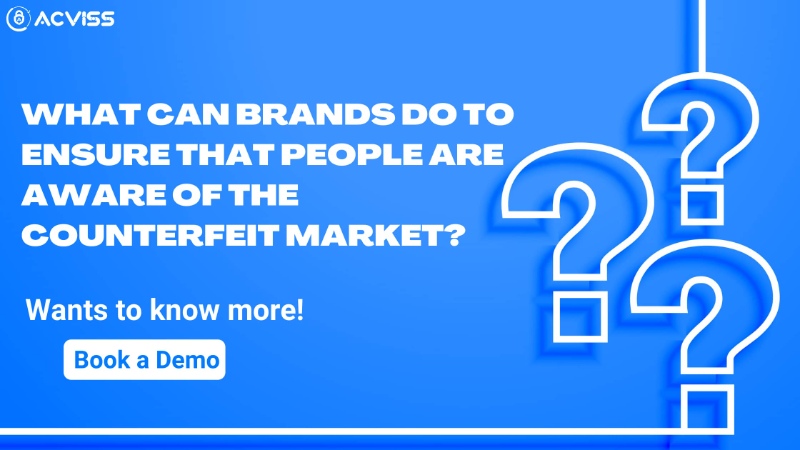Fake Toys Threat to Children’s Lives: How to Spot and Stop Counterfeits
Toys are not just playthings; they’re tools for childhood development. From teaching motor skills to stimulating sensory perception, toys shape how children learn and grow. However, an alarming truth lies hidden in the toy industry: counterfeit toys are infiltrating the market, posing serious health and safety risks to children.
The colourful teddy bears your child loves or the action figure they play with may be more dangerous than you realize. Counterfeit toys often bypass safety regulations, making them hazardous and harmful. This blog dives into the world of fake toys, their risks, and the solutions to combat this growing menace.

Counterfeit Toys: A Growing Problem
The toy industry is the second most counterfeited sector globally, with an 11% trade value loss attributed to fakes. In 2019 alone, counterfeit toys generated $32.3 billion in revenue in the U.S., with Europe seeing $44.6 billion. The rise of online marketplaces has exacerbated the problem, making it easier for counterfeiters to sell unsafe products directly to consumers.
Why Fake Toys Are Lucrative
Impossible to Identify at First Glance
- Counterfeit toys are designed to closely resemble genuine products, making it difficult for consumers to spot the difference. Fake toymakers skip rigorous safety checks, leaving buyers with substandard and potentially dangerous products.
Price Over Quality
- Authentic toys are often expensive. For families on a budget, counterfeit toys sold at a fraction of the price can seem like a good deal. However, the hidden cost is the safety and well-being of their children.
Lack of Awareness
- Many consumers underestimate the risks of fake toys. While some believe their children will outgrow the toys soon, the reality is that counterfeit products may contain toxic materials like lead or phthalates that can cause serious harm.
Easy Access on eCommerce Platforms
- The entry barriers for sellers on online marketplaces are low, allowing counterfeiters to list and sell fake products. Many consumers unknowingly buy fakes while trusting the credibility of popular platforms.
The Dangers of Fake Toys
Toxic Materials
- Fake toys often contain harmful chemicals like lead and phthalates. These substances can damage vital organs when ingested or inhaled. For example, substandard fur on a counterfeit teddy bear may trigger severe respiratory issues.
Choking Hazards
- Counterfeit toys frequently fall apart easily, leaving small parts that children may swallow, leading to choking or other injuries.
Lack of Durability
- Unlike genuine toys that are built to withstand rough handling, fake toys are poorly made and break easily, leading to wasted money and potential harm.
No Compliance with Safety Standards
- Counterfeit toys bypass critical safety protocols, including testing mandated by the Consumer Product Safety Improvement Act (CPSIA). Genuine toys undergo rigorous testing to ensure they are safe for children.
What Can Brands Do?
Adopt Anti-Counterfeit Technology
- Serialization, 2D, and 3D Codes: Each toy can have a unique identifier that buyers can scan to verify authenticity.
- Non-Cloneable Labels: These ensure that counterfeiters cannot replicate packaging or labelling.
Integrate Blockchain Technology
- Blockchain can improve visibility and traceability across the supply chain, ensuring that counterfeit products are identified and removed before they reach consumers.
Educate Consumers
- Brands can run awareness campaigns to inform customers about the risks of fake toys and how to spot them. Encourage buyers to purchase from authorized sellers or the brand’s official website.
Monitor Online Marketplaces
- Regularly scan for counterfeit listings on eCommerce platforms. Implement a robust IP infringement reporting system to remove fake products quickly.
Encourage Reporting
- Multi-layered loyalty programs can incentivize customers to report counterfeit products, promoting engagement and helping to identify fakes.
What Can Consumers Do?
Buy from Trusted Sources
- Purchase toys from official brand websites or authorized sellers. Avoid deals that seem too good to be true on third-party marketplaces.
Check Labels and Packaging
- Look for tracking markers or codes that can be scanned to verify authenticity. Watch out for misspellings or inconsistencies on the packaging.
Be Skeptical of Low Prices
- If the price of a toy is significantly lower than the market value, it’s likely a fake.
Inspect the Product
- Check the quality of materials, paint, and construction. Genuine toys are made with durable, non-toxic materials and undergo safety checks.
Educate Your Kids
- Teach children to recognize quality in toys and encourage them to report any broken or unsafe items.
The Role of Technology in Fighting Counterfeits
The global toy market is vast, with a complex supply chain involving multiple players. To combat counterfeits effectively, brands and governments must leverage technology:
Track and Trace Systems
- Product Serialization and QR codes allow consumers to verify product authenticity and help brands monitor the supply chain.
AI and Machine Learning
- AI-powered systems can identify counterfeit listings on eCommerce platforms in real-time, flagging suspicious activity.
Tamper-Proof Packaging
- Secure packaging prevents tampering during transit, ensuring the product reaches consumers in its original condition.
Acviss: Securing the Toy Industry
At Acviss, we offer customized anti-counterfeit solutions tailored to the toy industry. From serialization to blockchain-based tracking, our tools help brands protect their reputation and ensure consumer safety. Our loyalty programs not only foster customer engagement but also promote awareness about the dangers of counterfeit toys.
Conclusion
Fake toys are more than a financial risk—they’re a threat to the health and safety of our children. With the toy industry experiencing rapid growth, the fight against counterfeit products must be a priority for brands, regulators, and consumers alike. By leveraging advanced technologies and promoting awareness, we can create a safer environment for future generations.
Protect your brand and your customers today.
Contact Acviss for a free demo and learn how we can help secure your supply chain.


